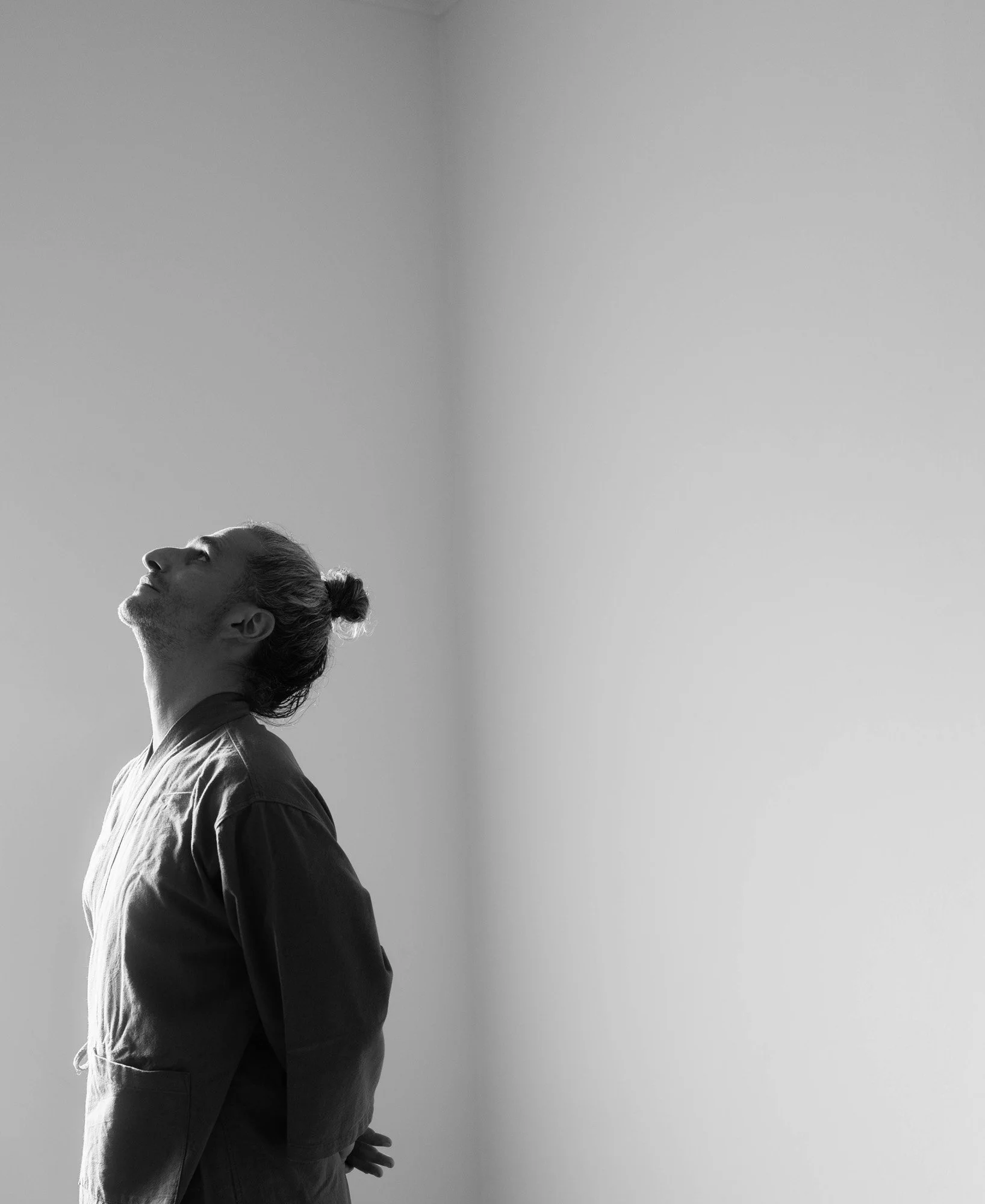
Bio
Shadi Enbashi is the co-founder of SEVA in Dubai and a visionary voice in contemporary wellness—blending ancestral knowledge, emotional somatics, and embodied leadership into a rare, multidimensional practice. A seasoned Kundalini Yoga practitioner & teacher and bodywork therapist, Shadi’s approach is rooted in emotional regulation, nervous system intelligence, and the capacity to meet life—not as a problem to solve, but as a rhythm to reenter.
With over a decade of immersion in multiple yoga practices with a primary focus on Kundalini Yoga, his journey has bridged competitive martial arts, extreme sports, and sacred traditions from the Himalayas to the Amazon. His classes and sessions do not teach techniques alone—they transmit a way of being: one that is rhythmic, intuitive, and radically honest. Shadi’s therapeutic work focuses on emotional bodywork, somatic restoration, and releasing long-held patterns of survival through touch, breath, and presence. He works with clients across cultures and life stages, individuals, couples and children, offering a practice that speaks to those ready to return to their own intelligence.
At SEVA, Shadi doesn’t just lead programs—he stewards the vision and the ecosystem. As a co-founder, he operates with a panoramic view, ensuring the space remains an incubator for transformation, not trend. Under his direction, SEVA has evolved into a nature-aligned, science-backed sanctuary that challenges the commercial clichés of wellness and offers instead a return to what is foundational, embodied, and real since 2014.
Shadi is not interested in replication—he is interested in memory: what the body remembers before the noise, what the breath knows before belief. Through movement, stillness, ritual, and raw human presence, he invites a deeper kind of healing. One that cannot be outsourced. One that begins with the body—and returns to it, again and again.
Roots
My work is rooted in places that don’t appear on maps—inner landscapes shaped by silence, sensation, and encounter. I was shaped as much by the dojos of my youth as by the jungle ceremonies of my adulthood. From the rigors of martial discipline to the surrender to the prayers of gratitude at the feet of the Andes, each step etched a deeper understanding: the body is a vessel, and every tension tells a story.
Kundalini Yoga became a spine through it all—not as a system to master, but as a language to remember. Its kriyas, mantras, and meditative architecture taught me to map internal space through breath and presence. But it was through the Nir Levi Method that I learned to enter that space with precision, silence, and informed touch. It revealed to me how emotion lives in fascia, how the body speaks before the mind translates, and how healing is not provoked but permitted.
Together, these lineages taught me not only to move energy’s manifestations, but to track its subtle currents, blockages, and resonances that shape our internal landscape long before they surface as thought or emotion or in the body. My studies have drawn from the esoteric lineages not as abstract systems, but as living technologies for awakening perception, restoring coherence and enhancing our abilities to embrace chaos. And beyond practice, I returned again and again to the ancient, the unrecorded, the oral transmissions passed from elder to apprentice.
I carry with me the philosophies of the Tao, the stillness of the Himalayas, the non-linearity of the Amazonian healing arts, and the elegance of Japanese somatic medicine. Not as badges, rather as instruments—tuned over time in service of a single inquiry: what allows us to return to our original rhythm, and how do we stay there in a world built to pull us out?
I did not come here to perform,
I came here to remember.
